-

3 Ways to Use Flashcards in Your Music Classroom
Flashcards have to be one of the most useful resources a teacher can have in their classroom! Use them to save you having to write on the board or let the kids use them to recognise – and match the visual symbols to – what they hear. Use them to play a game with, to […]
-
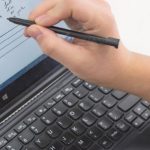
Top 10 Videos for Scales & Key Signatures
The aim of the game here at DSMusic is sequential music literacy and really knowing. This means step-by-step teaching and learning of music aural and music theory concepts, followed by the practicing of these in a variety of ways. Scales and key signatures (tonality) are a vital part of any music literacy approach. They pop […]
-

4 FREE compositional device resources for music performance analysis
Dive into the four compositional devices in the VCE Music Study Design – with tips and listening examples.
-

Step-by-step tips for getting better at rhythmic dictation.
A question I often get asked by students – especially in the lead up to exams! – is how to do dictations. Here at DSMusic, we’re big on really knowing these concepts, whether it’s scales or intervals, or chords or rhythm. It’s important to remember that everything you’re doing in a music language space is […]
-

Top 10 Videos for Chords, Chord Progressions & Cadences
Here at DSMusic, we understand that a lot of what we teach and learn in the music aural and theory space is connected. While this often means we can practice several musical concepts within the same activity, it can also make step one a little daunting. Concept-wise — chords, chord progressions and cadences definitely fit […]
-

Top 6 Ways Solfa Can Help You With Music Performance
While we all know that becoming truly musically literate — which is the aim of the game here at DSMusic — lends itself quite well to improving our musicianship and theory skills, all that do re mi also actually applies to the practical side of things too. That’s right! Solfa isn’t just for when you’re […]
-
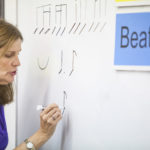
Ways to gamify rhythm in your music classroom.
When exams are looming it can be tempting to take what’s needed for test-time and build your music classes around that. Here at DSMusic though, we’re fans of fostering music literacy and as keen on finding a variety of ways to scaffold really knowing these musicianship concepts in your spaces. You can’t always address these […]
-

Top 10 Tips for Tackling Music Performance Analysis
Here at DSMusic, we’re pretty heavily focused on the music language side of things, and the really knowing. However, we’re also big fans of music performance analysis — understanding what other performers are doing musically to make us feel a certain way. We really get lost listening to music and decoding the mysteries behind mood, […]
-
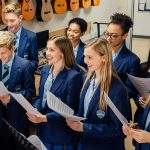
Why singing is key for music teaching and learning.
When I set out to design the DSMusic material, I knew I wanted to create a program that would teach my students to become truly musically literate – to be able to ‘read’ and ‘speak’ music like we do other languages. That is, when we see words written we understand their meaning and we know […]
-
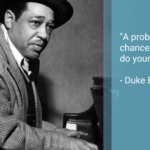
Melodies, musicianship & mindfulness.
Top 10 Videos for Aural & Theory Concepts! We know preparing, practicing and really knowing music aural & theory can be a bit challenging because we don’t really know where to start. To support all the great music-making happening around us, we’ve put together a top 10 list to point you in the right direction. […]
-

A Few of my Favourite ….. Interval Activities
A Few of my Favourite ….. Interval Activities I was recently struck by how many activities we need to keep our students interested and engaged in our music classes. If we teach something to our 4 year old students (e.g. “beat”) then we need to have sufficient practice activities to challenge our students enough […]
-
Top 10 Videos for Music Theory & Aural Concepts
Here at DSMusic, we’re big on all things music language, and building music literacy using Kodály-inspired strategies. We know that while the fundamentals of what we’re teaching and learning in these spaces hasn’t changed too much, what we’re required to do come exam time often gets tweaked. This is the case for us in Victoria […]
-

Mapping melody, creating character and why we need music.
Map your way through melody! To give you a starting point we’ve popped together 3 FREE activities for mapping melodic contour in your classroom. Plus, while you’re at it, find out what melody and melodic contour has to do with creating musical character and mood! Learn more in this DSMusic blog article. Check out some […]
-

3 FREE activities for mapping melodic contours in your music classroom.
Ever wondered why the Star Wars main theme makes you feel ready to run off and join the Rebel Alliance and take on the entire Empire? Sure, that fanfare has some pretty epic blasting brass which has something to do with it, but there’s another reason. The answer? Melodic contour. Not sure what that is? […]
-
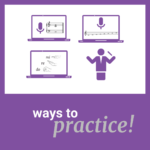
Tackling tonality, beat and ways to practice!
It’s Key Signatures & Tonality Time! What lies at the heart of tackling tonality? That’s right—it’s key signatures. Join Deb as she unpacks a FREE resource that brings together everything you need where key signatures, transposition and tonality are concerned. Learn more in this DSMusic blog article. Check out some resources and content you might […]
-
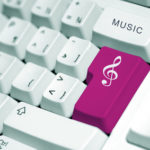
Why scales are key when it comes to tackling tonality.
Anytime we’re approaching questions or activities built around the concept of tonality or key signatures, there’s a great deal of assumed knowledge we’re trying to tap into. As with much of our musicianship elements, everything is interconnected. We can’t teach and learn and really know tonality until we have an understanding of scales and key […]
-

Top 10 music literacy tips to set up your school year!
Look, let’s be honest, returning to school for a new year feels a little bit like coming out of a deep festive-season-holiday hibernation. The thought of showing up on day one and having your entire music theory approach planned out for the year can be daunting. However, what you do on day one is actually […]
-
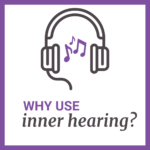
Inner Hearing — why audiation is key!
As musicians we should aim to be able to read music just as easily as we read a book. When we read books, we hear the words in our mind rather than speaking them aloud. Just as we can hear the written word in our heads, it is important to learn how to hear written […]
-

Intervals, semiquavers and practicing how to practice!
Check out some resources and content you might have missed around the DSMusic space recently. Resource Round-Up DSMusic’s top tips for practicing musicianship! Needing to “practice” is quite a catch-cry in the music learning space but sometimes it can be a little harder to model what that might look like for our students, as far […]
-
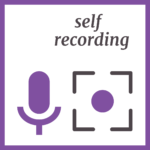
Why you should record yourself during music practice!
As a “performer” – even if you are only singing scales in the shower – you do not hear yourself the way others do. You may be too busy thinking about the Solfa names of the notes you are singing or the rhythm Deb asked you to clap as you sing that melody. Consequently, to […]
-

Ways to Actually PRACTICE your musicianship skills: DSMusic’s Top Tips
Here at DSMusic, we’re big on all things music language, sequential scaffolding and skill strengthening. Cracking into concepts and then taking learning all the way through to knowing. Needing to “practice” is quite a catch-cry in the music learning space but sometimes it can be a little harder to model what that might look like […]
-
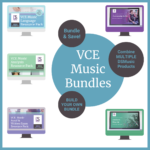
Practice tips, resource bundles & beating exam stress.
Check out some resources and content you might have missed around the DSMusic space recently. Resource Round-Up Get more of what you need from DSMusic for less! Announcing the launch of FIVE brand new BUNDLE options for VCE Music! Bundle together the DSMusic online courses for Analysis & Musicianship to get your interpretation as well […]
-

What Know Really Means: Strengthening Your Musicianship Skills
We learn things all the time, but learning is not knowing. Just because you can recall information for a test or parrot something back you’ve been told before, doesn’t mean you actually understand or really know these concepts. In musicianship – being truly musically literate – a key element of really knowing is what’s called […]
-
What should a Music Literacy Program contain to be TRULY GREAT?
The famous Hungarian composer, Zoltan Kodály, once said that to be a good musician we must have: 1. A well-trained ear.2. A well-trained intelligence.3. A well-trained heart.4. A well-trained hand. All four must develop together, in constant equilibrium. In today’s fast paced world, students (and often their parents) want to be able to “play the […]
-

Solfa, sailing & slow, mindful practice
Check out some resources and content you might have missed around the DSMusic space recently. Resource Round-Up It’s never too late to learn Solfa! Are you always stuck finding ways to get your students better at the musicianship stuff? The Music Language Online Course – Musicianship Module offers daily practice activities across a variety of concepts […]

